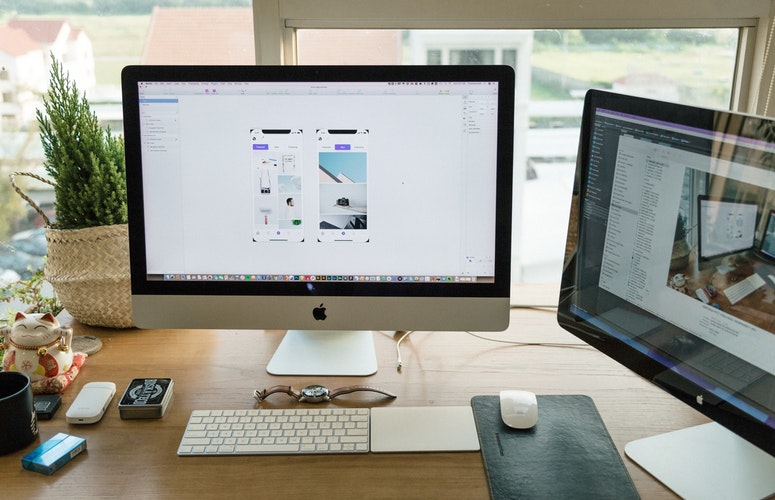Web design is now growing increasingly popular for its amazing effectivity in attracting viewers and promoting brand awareness. With that being said, the design trends keep continuing, always changing for the better and showing new beautiful aesthetics designers are inspired from. And with the advancement of technology, web design only gets better from here on out!
It’s crucial to take note of the various trends and styles that people find enticing today, creating that beautiful and consistent environment for everyone to visit. That’s why one needs to learn all about the styles that will stay and the new things to except the coming year! So read on as I show you the seven solid website design tips to achieve success in 2019.
We’re faced with so many latest trends in website design, but which trends are here to stay to beautify sites for the long run? Here are the top seven web design tips to follow to stay consistent with your branding while still keeping a stylish aesthetic for your viewers’ pleasure:
1. Flat and Minimalist Design with White Space
Flat design is the minimalist approach, featuring clean and openly bright colors, matched with two-dimensional illustration. It’s simple, it’s clean, and it’s become a standard for web designing. What once was just another classy trend ended up being something permanent for many websites?
The reason why it’s become such a great choice as a design is because of its clean look and the fact that it encouraged faster page loading, so people are able to enjoy better user experience regardless of where they visit the page from. It’s less data-heavy compared to other websites which use heavy visuals and large-sized images. Even white spaces are being hailed for their minimalism and better readability!
2. Animated GIFS
People want instant gratification, meaning quick-loading websites and to get information in a bite-sized manner, without having to spend so much time and effort to do so. To catch one’s attention, this is where animated GIFs come along.
These short and simple animations are able to help convey some of the complex ideas shortly, all the while keeping the engagement and entertainment for users. It’s great for either providing information or to entertain the reader and give them more of a visual. Furthermore, they’re accessible in both desktop and mobile, making it enjoyable and useful for everyone.
3. Conversational Bots with Machine Learning
In the past years, people have seen conversational bots continue to rise, as well as machine learning. This is to the point that conversion with bots is now second nature, with apps and computerized assistants being useful to many today. Even machine learning features as simple as suggesting searches have become practical to many.
This is why a lot of web designers and businesses are beginning to incorporate these two features into websites. It offers both better conveniences to users for instant responses, as well as efficiency in purchasing or availing offers from the website.
4. Sketch as a Design Software
Throughout the years of technology, we’ve experienced quite a lot of debate, from Apple vs Android down to the real pronunciation of GIF! But for those in the world of web design, the biggest debate was between Photoshop vs Sketch as a web design tool.
While Photoshop has been leading for years, Sketch is now seeing the light and becoming a more popular choice. This software is built for web designers, covering most of the design processes with its many plugins and user-friendly interface. Because of its main focus on web design, most companies will begin to shift their software to Sketch.
5. Broken Grids and Asymmetrical Layout
One of the main emphasis this year is the designing within set grids. This grid system allows designers to maintain consistency and alignment throughout their design, making it easier for web developers to publish it live. It’s also the norm for designers to use such grids during design processes.
BUT, designers are now breaking free from the standard set grids, having the creative freedom as they design and creating the unique style which intrigues and entices many. It calls attention and goes outside boundaries, which is what many would appreciate.
6. Using Design Systems and Organic Shapes
Design systems are readable components, which are guided by sets of principles and rules. These systems are very important pieces for various companies, such as Shopify and Airbnb. Through these design systems, teams can reduce the inconsistencies of the design process, speeding it up and attracting more viewers.
Besides that, people are now going for more organic shapes, which sketches and imperfection being a good way to style up a website. It adds more depth and breaks that monotony of the perfect and clean shapes we see.

7. Website Accessibility
This isn’t exactly a trend, but an important aspect when it comes to designing your website for success and better traffic. Accessibility is the ability for the disabled to use your website, with the proper design and codes to make it easier to navigate.
Through better accessibility, the more people are able to use and visit your website, also ensuring that inclusivity is there and that your business is for everyone. It’ll step up your traffic and branding, with people appreciating your website more.
Wrapping It Up
Web design exists and it’s here to stay, providing you the fresh and amazing benefits that brands can take advantage of. As long as you’re familiar with the different web design tips, your customers and viewers can enjoy the accessible and stylish environment they’ll want to continue visiting. It all starts with fresh design and content that raises brand awareness and customer satisfaction.
I hope that this article on the seven solid website design tips to achieve website success in 2019 helped you out! So don’t wait any longer and look into any of these tips now.
If you have any questions or want to share your tips and experiences on web design, then comment below. Your thoughts are much appreciated.



